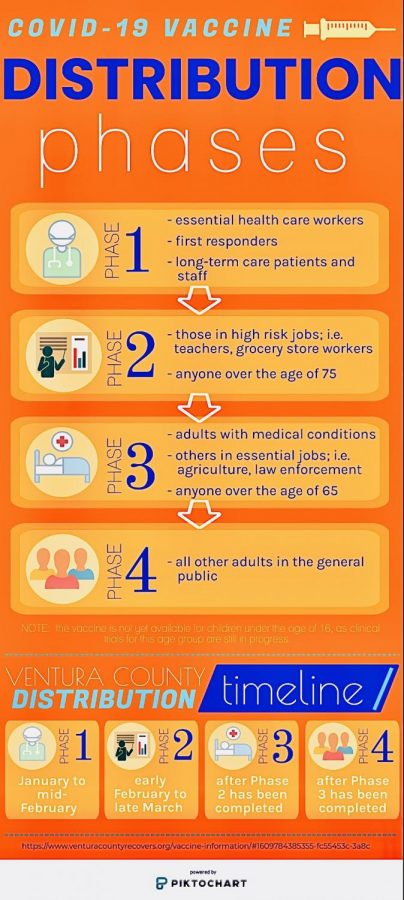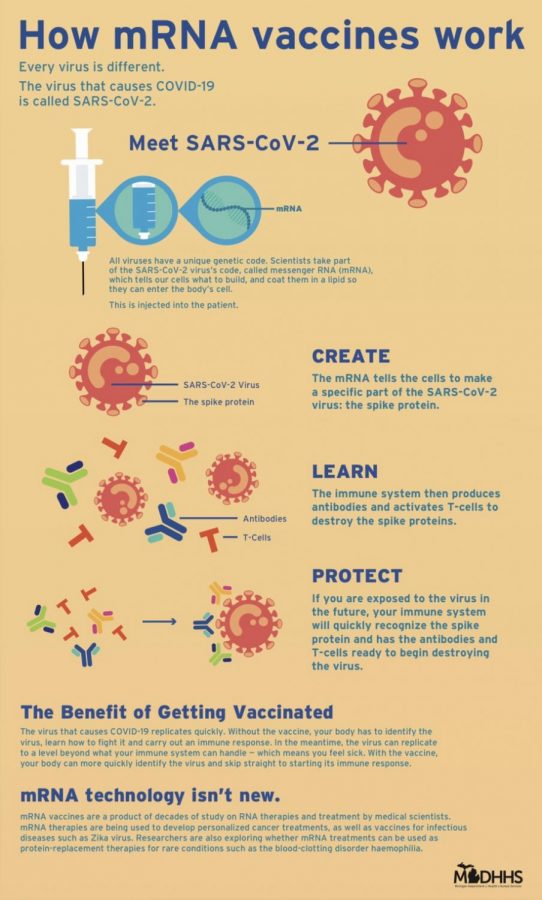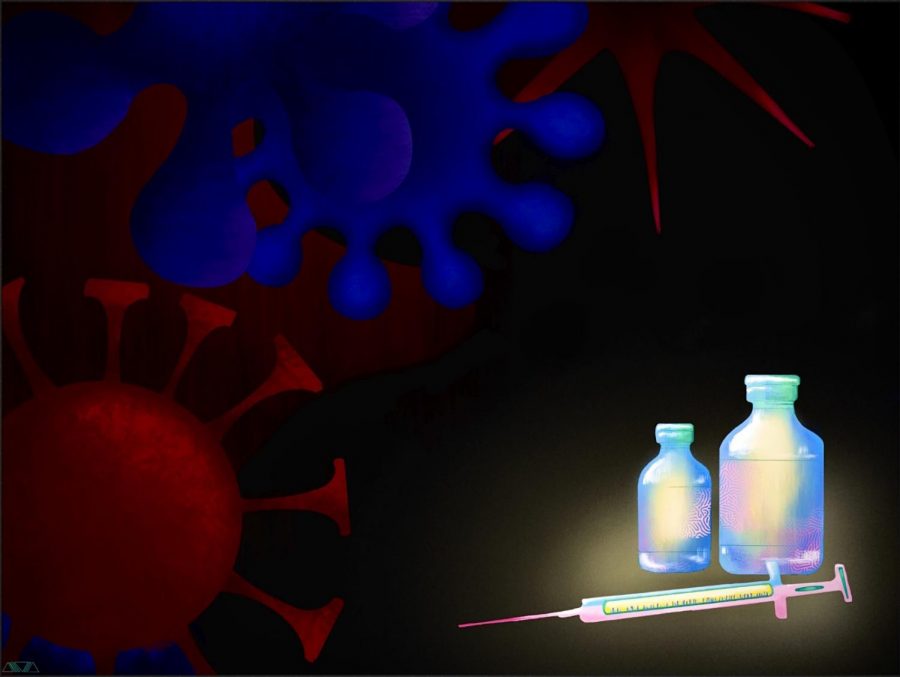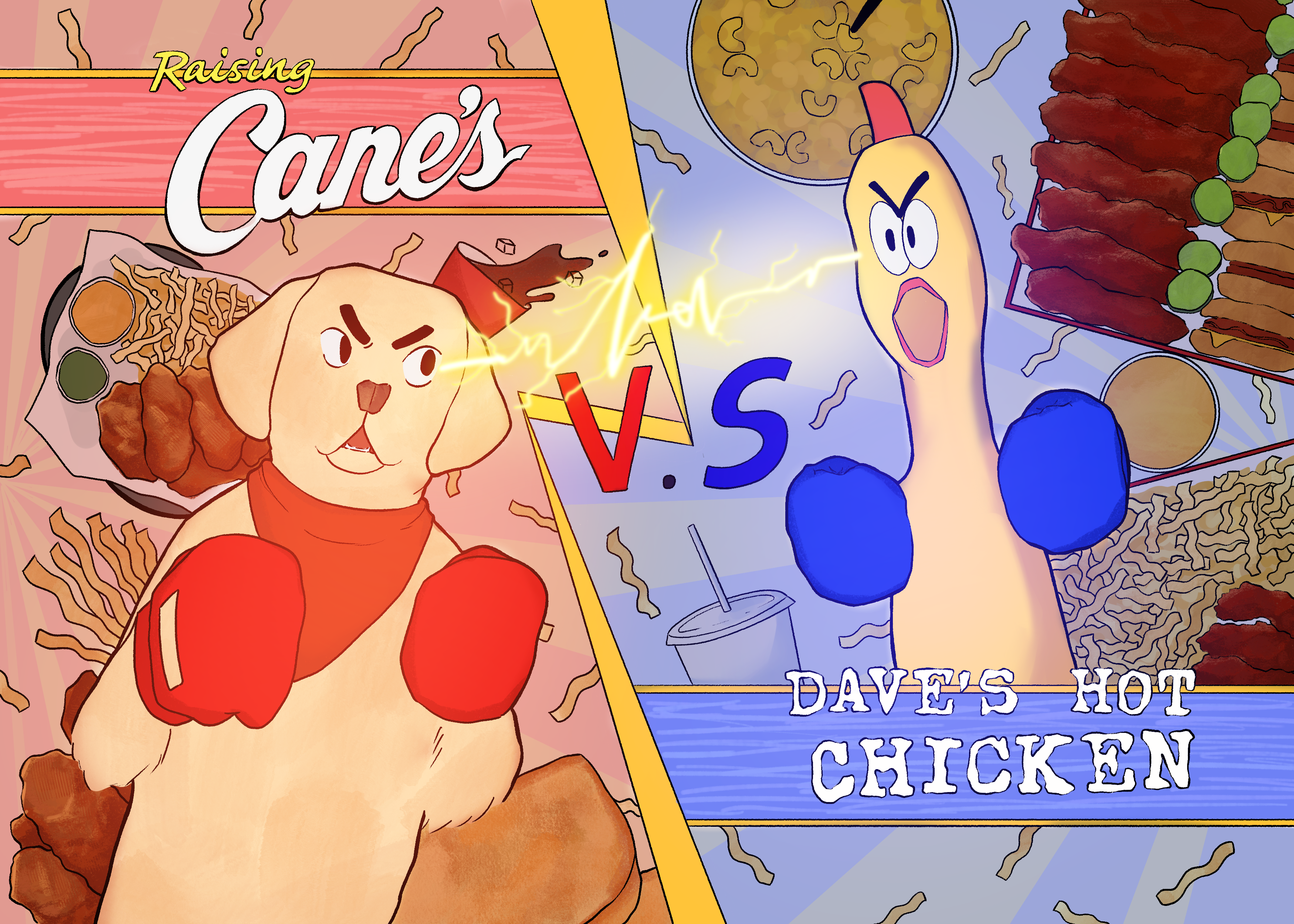Venturing into the COVID-19 vaccines
COVID-19 vaccines are born in a world taken over by the virus, shedding a light of hope to many in dark and uncertain times.
January 21, 2021
With all of Southern California at 0% Intensive Care Unit (I.C.U.) capacity and over 2,035,600 deaths worldwide from the COVID-19 virus, the creation of a life-saving vaccine is bringing hope to the Foothill Technology High School (Foothill Tech) community along with millions across the globe. However, the invention of vaccines raises questions such as when will they be given, how do they work and are they even safe or effective?

Deals are currently being made and orders are being placed with vaccine distributors as countries jump to get their hands on as much of the advanced technology as they can. While many vaccines have been created, only two have been Food and Drug Administration (FDA) approved and distributed in the U.S.
These two vaccines are from companies named Pfizer–BioNTech, and Moderna. In the United States, Pfizer and BioNTech are delivering an initial shipment of 2.9 million doses and from the company Moderna, 5.9 million doses will be delivered to local public health departments.
Individuals deemed ‘essential’ to our society will receive the vaccine first, as well as those most at risk by the infection. Phases of distribution are necessary because there aren’t enough doses available yet for everyone to get the vaccine at once. With more vaccines being created, scientists believe that access to COVID-19 vaccines will only increase as time goes on.
How safe are these vaccines?
When considering whether or not to take part in a COVID-19 vaccination, safety is a priority to many. Luckily, in order to be approved, vaccines must go through a rigorous series of trials that determine if they are not only safe but also effective. If a vaccine is FDA approved, it will have been given to thousands of people of different backgrounds before reaching any members of the public.
Scientists have found that serious reactions were rare among recipients of both Pfizer-BioNTech and Moderna vaccines. Side effects occurred in at least 25 to 33 percent of patients, sometimes more, including headaches, chills and muscle pain. These side effects do not impact vaccinated individuals for long and demonstrate that the body’s immune system is working in response to the virus proteins. This is often seen after receiving vaccines for other viruses as well. However, with each new vaccine comes a risk of potential unforeseen negative effects.
How effective are the two FDA approved vaccines?
According to studies on both vaccines, an individual who chooses to receive either the Pfizer-BioNTech or Moderna vaccine will have a very high rate of efficacy in protection against the virus. If one were to receive the Pfizer-BioNTech vaccine, it must be given in two injected doses, 21 days apart.
The first dosage from this vaccine is 52% effective or higher, and the second dosage brings the vaccine recipient to a 95 % efficacy rate. Anyone receiving the vaccine made by Moderna will be protected from the virus with a 94.5 % efficacy rate, after the two required doses have been given. Due to the originality of these COVID-19 vaccines, researchers are not certain how long protection from the virus will last. Safety from getting COVID-19 appears to last at least 90 days, according to clinical trials that have been ongoing for approximately 90 days themselves.
How do these new vaccines work?
The vaccines coming from Pfizer-BioNTech and Moderna use mRNA technology to fight off COVID-19. The vaccine is designed to use the mRNA systems the body already has in place to activate the immune system and fight the virus. Using the mRNA or ‘messenger RNA’, which normally produces proteins in cells, the coronavirus vaccine consists of a small piece of viral mRNA that is injected into the body.

Our human cells then transcribe viral mRNA to make viral spike proteins in cells near the injection site. These spike proteins are the spike-like projections that can be seen on the outside of the coronavirus, giving the virus its crown shape and name. The spike proteins then activate the immune system, which can then attack coronaviruses with the same spike-like outer layer.
After the protein synthesis occurs, the mRNA segment from the vaccine is degraded within several hours, and will not be replicated or passed on to cellular offspring, as DNA might. mRNA vaccines, of all vaccines, can be made fairly quickly and are therefore at the center of a vaccine revolution because scientists can simply design and fabricate the mRNA code for any viral proteins. Different from technology used in older vaccines, mRNA code is easier to manufacture than proteins themselves.
The invention of vaccines effective in preventing a deadly virus brings an optimistic viewpoint to those living in this pandemic era, including scientists and researchers who have found great promise in the mRNA vaccines. These mRNA vaccines had been researched for many years, but not yet produced before the COVID-19 pandemic. The new mRNA technology is “potentially revolutionary,” as it, “could, in theory, be used to engineer any protein the body needed to boost immunity against pathogens and fight diseases such as cancer and rare genetic conditions,” according to The Scientist.
As the population moves forward into 2021, vaccinations for COVID-19 bring the potential to change millions of lives, from survival of the virus to everyday life. In addition to masks, hand washing and social distancing, scientists and doctors feel vaccinations will be key to slowing the spread of disease. Health experts advise the public to choose wisely when deciding whether or not to become a part of this vaccine revolution.













